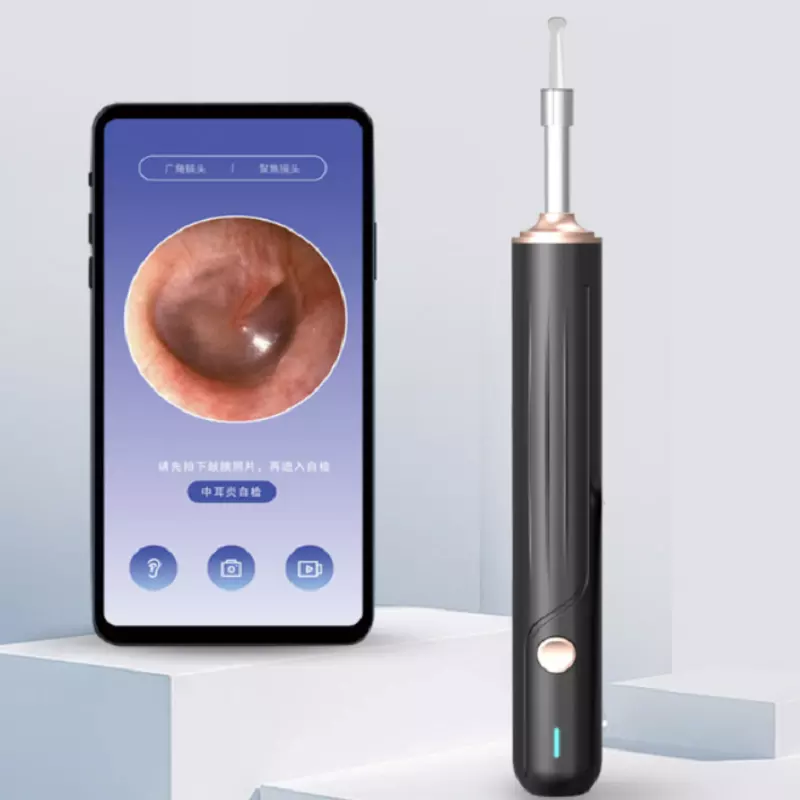Ears are usually self-cleaning.However, despite their doctors’ warnings, many people use cotton swabs to get the job done.
Cerumen, also known as earwax, is vital to the health of your ears.In fact, it’s not really wax at all, but is made partly from dead skin cells in the ear canal.The area within the ear canal is constantly rejuvenating itself, and as dead cells are removed, they are pulled into the process of producing earwax.
The ear canal is also lined with hair,which helps move earwax along the ear canal and out of your body.Earwax is produced by secretions from the cerumen and sebaceous glands located in the external auditory canal.Cerumen is a sweat gland, and sebaceous glands secrete oil to help soften the skin.
Earwax works by protecting the skin from infection because it is a natural antibacterial agent.Another function of earwax is to clean the ear canal as it travels slowly through the ear canal and out of the ear with jaw movements such as chewing.During this movement, it carried debris and waste that could enter the canal.
Like many other things in your body, your ears need balance.Too little wax and your ear canal may dry out; too much may cause temporary hearing loss. Ideally, your ear canal does not need cleaning.However, if excess wax builds up and causes symptoms, you may consider removing it using safe methods at home, which do not include cotton swabs.
Using a cotton swab to clean the ear remains the leading cause of perforated eardrums, according to a study published in JAMA.[8] Your eardrum, also called the eardrum, can be perforated by an object that enters your ear canal.
“In our experience, cotton-tipped applicators (Q-tips and similar products) are often the tools patients use to clean their ears. Our speculation is that most of these injuries are caused by patients trying to remove their own earwax. .”
Other items people reportedly used to clean their ears included bobby pins, pens or pencils, paper clips and tweezers.It is important to realize that these shouldn’t be placed in the ear as it is dangerous.
In most cases, if left untreated, earwax can drain out of the ear canal and out of your body.Sometimes it can hit or block the eardrum.This is a common problem that doctors see, and they find that the most common cause is that using a cotton-tipped applicator may remove some superficial earwax, but usually push the rest deep into the ear canal.
If you have cotton swabs at home, take a moment to read the information on the box.You might be surprised to find a warning: “Do not insert a cotton swab into the ear canal.” So if you feel that you have a buildup of earwax in your ear canal that is causing your symptoms, what can you do to safely remove it?
So use the ear war removel tool is very important.
Earwax hitting the eardrum and other medical and environmental causes can cause hearing loss.In a study of 170 students aged 11 to 17 , researchers at McMaster University in Canada found that certain habits, including frequent loud noises at parties or concerts, listening to music with earplugs and using Cell phones are the norm.
More than half reported tinnitus or ringing in the ears the day after a loud concert.This is considered a warning sign of hearing loss.Nearly 29% of students are currently found to suffer from chronic tinnitus, as evidenced by psychoacoustic examinations in soundproof rooms.
According to the American Tinnitus Association,millions of American adults experience this condition, sometimes to a debilitating level.According to data from the 2007 National Health Interview Survey, 21.4 million adults experienced tinnitus in the past 12 months.Of these, 27% had symptoms for more than 15 years, and 36% had almost persistent symptoms. We recommend this Ear Pain Relief Massager , which can relieve tinnitus problems.
Tinnitus is also associated with pain disorders and headaches , including migraine.It often causes difficulty sleeping, such as delayed sleep, sleep arousals, and chronic fatigue.Tinnitus is also associated with cognitive deficits, including slowed cognitive processing and attention problems.
Post time: Jul-25-2022




